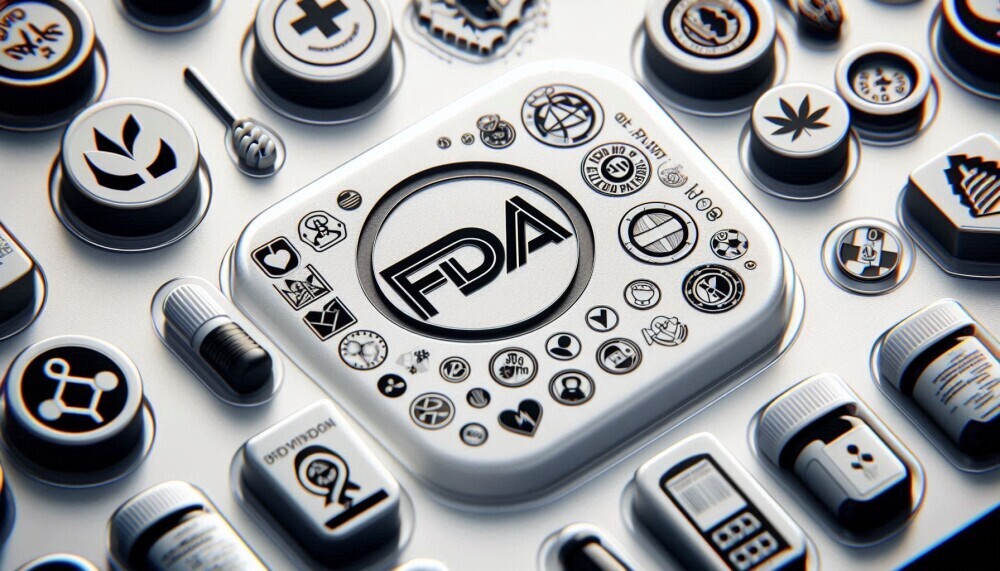Regulatory Hurdles For Glucose Wearables: FDA And CE Path To Approval. This is our subject for this article. Being approved by the FDA or the CE (European Union) for a product can be a minefield of regulation and bureaucracy. Companies need to get this right or they will not get approved to bring their products to market.
Introduction
Glucose wearables promise a future where tracking blood sugar is painless, continuous, and deeply integrated with daily life. From optical wrist sensors to smart patches and textiles, innovators are racing to deliver non invasive or minimally invasive systems that inform smarter food choices, safer workouts, and better clinical decisions. Yet between a working prototype and a product you can buy sits a long road of regulatory science. The rules are designed to protect people, but they can feel complex to anyone new to medical devices.
This guide unpacks how glucose wearables navigate approval in the United States through the Food and Drug Administration and in Europe through CE marking under the Medical Device Regulation. You will learn the common pathways, the evidence regulators expect, the role of software and algorithms, and the real world obligations that continue after launch. We will also cover likely costs and timelines, benefits and drawbacks of each route, and practical tips for teams building these products as well as buyers deciding what to trust.
What counts as a glucose wearable?
Glucose wearables include devices that estimate glucose in blood or interstitial fluid and present results on a display or a connected app. They may use electrochemical sensors, optical spectroscopy, radio frequency sensing, or combinations of signals. Many pair with software that filters noise, predicts trends, and sends alerts. The intended use matters. If the device is marketed to diagnose, treat, or manage disease, regulators treat it as a medical device. If it is framed only as a general wellness tool with no claim to inform medical decisions, it may fall outside medical device rules, but claims must be very narrow and cannot imply diagnosis or therapy.
Device classes and why they matter
Regulatory class is a risk based label that determines how much evidence you must provide.
Typical classification questions
• Does the device guide therapy like insulin dosing
• Is it invasive or non invasive
• Is it continuous or spot check
• What happens if readings are wrong
• Does the device include machine learning that adapts after launch
In the United States, traditional continuous glucose monitors have generally been cleared or approved as Class II or Class III devices depending on intended use and features. A non invasive glucose wearable that claims to guide therapy may face a higher bar than a device intended only for trend awareness. In Europe under the Medical Device Regulation, most glucose monitors are non implantable active devices used for monitoring a vital physiological parameter. They are commonly placed in Class IIa or IIb depending on risk and intended use, with IIb more likely when readings drive medical decisions.
FDA pathways at a glance
Core FDA routes for glucose wearables
• 510 k clearance when you can show substantial equivalence to a legally marketed predicate
• De Novo classification when there is no suitable predicate and the risk can be controlled with special controls
• Premarket Approval when the device is high risk and requires extensive clinical evidence
A non invasive wearable that makes novel claims often uses the De Novo route first. After the first De Novo, later devices with the same intended use can use 510 k by claiming equivalence. If the device directly informs therapy and poses higher risk, PMA may be required with larger clinical trials.
What evidence the FDA expects?
Analytical performance
Show how the sensor performs across physiological ranges, temperatures, motion, skin tones, and sweat levels. Demonstrate precision, repeatability, interference testing with common substances, electromagnetic compatibility, and stability over the wear period.
Clinical performance
Conduct studies against a reference method like a laboratory blood analyser or a high quality invasive reference. For continuous monitors, accuracy is often summarized by metrics such as mean absolute relative difference and consensus rate within defined error grids. Show performance during meals, rest, moderate exercise, and night. Include diverse participants to address skin tone and perfusion.
Human factors
Evaluate if real people can use the device correctly with realistic instructions. Test application, pairing, calibration steps if any, and interpretation of alerts.
Software and cybersecurity
Document the entire software life cycle. Show how you manage requirements, verification, validation, and risk. If the algorithm includes machine learning, define training data, guardrails, update controls, and how you prevent drift. Provide a clear plan for data protection, encryption, and vulnerability handling.
Biocompatibility and safety
If the device contacts skin, show conformity with biocompatibility standards for irritancy and sensitization. Demonstrate electrical and mechanical safety, including charging safety and thermal limits.
Manufacturing quality
Operate under a quality management system aligned with relevant standards and the FDA quality system regulation. Keep design history files, device master records, and corrective action procedures.
CE marking in the European Union
Under the Medical Device Regulation, glucose wearables require conformity assessment against general safety and performance requirements. Most devices above the lowest risk class involve a Notified Body audit and technical documentation review.
CE essentials for glucose wearables
• Determine classification based on intended use and risk
• Build a technical file covering design, risk management, clinical evaluation, and usability
• Show clinical evidence that benefits outweigh risks
• Establish a quality management system with production controls
• Register unique device identification and prepare for EUDAMED listing
• Plan post market surveillance and periodic safety updates
The clinical evaluation can leverage clinical investigations, literature, or a mix, but for novel non invasive sensing, a clinical investigation is almost always necessary. Post market clinical follow up is expected to confirm performance in real life.
Labelling and claims make or break your path
A device that promises trend awareness for lifestyle insight will face a different bar than one that claims it is accurate enough to replace finger sticks for insulin dosing. Words like detect, diagnose, and treat trigger medical claims. Be precise. If the product requires confirmatory testing before therapy decisions, say so clearly. Regulators will check that the app user interface and marketing materials match the labelling.
Software as a medical device and updates after launch
Glucose wearables rely on signal processing and predictive algorithms. The app can be a medical device in its own right. Plan how you will update the algorithm without changing the intended use or creating new risk. In the United States, some changes can be handled with documentation, while others need a new submission. In Europe, significant changes require Notified Body assessment. Build an update policy that explains how you validate new models, run regression tests, and communicate changes to users.
Timelines and what they really mean
There is no single clock, but teams commonly spend months on analytical bench work, several months to recruit and complete clinical studies, and months more to prepare submissions. A straightforward 510 k with a clear predicate may take around four to six months from submission to a decision, not counting the time to generate evidence. A De Novo can take longer. CE marking under the Medical Device Regulation adds time for Notified Body scheduling and review. Expect the entire effort from feasibility to approval to run well beyond a year for a novel non invasive approach.
Price and budget considerations
Typical cost elements
• Prototype development and sensors
• Bench testing for analytical validation
• Clinical investigation design, sites, and operations
• Biocompatibility and safety testing
• Quality management system setup and audits
• Regulatory consulting and submission fees
• Cybersecurity testing and penetration assessment
• Post market surveillance and customer support
For context, many start ups budget several hundred thousand pounds for early validation and easily reach seven figures by the time clinical studies and regulatory reviews are complete. On the market, consumer prices for glucose wearables vary widely. Traditional continuous monitors with disposables often include a starter kit cost and ongoing sensor expenses. Non invasive systems, when available, tend to have a higher device price with lower ongoing costs if there are no consumables. Exact figures depend on design choices and business models.
Benefits of robust regulation
• Protects users from inaccurate readings that could harm therapy
• Creates common benchmarks so products can be compared
• Encourages better clinical study design and diverse enrolment
• Builds trust among clinicians and insurers
• Forces long term planning for service, quality, and updates
Drawbacks and pain points
• Lengthy timelines that slow access to innovation
• Significant cost for small teams
• Moving targets as guidance evolves
• Complex documentation burden
• Post market obligations that require ongoing investment
Post market responsibilities
Approval is the start, not the finish. You must monitor complaints, trend adverse events, and file vigilance reports when required. Run post market clinical follow up to confirm real world performance and capture subgroups who were under represented in trials. Keep your risk file and clinical evaluation current. Maintain cybersecurity by patching libraries and rotating credentials. If a safety issue arises, regulators expect field actions to be swift and well communicated.
Who should pursue medical claims and who should not
Best suited for medical claims
• Companies aiming to guide therapy or replace confirmatory tests
• Teams with resources to run robust clinical studies
• Products intended for people who rely on the readings to make medication decisions
• Platforms that integrate with clinical workflows and support professional review
Better suited for wellness framing
• Early platforms that offer trend insights but are not yet accurate for dosing
• Consumer products for curiosity and lifestyle experimentation
• Devices focused on training and nutrition awareness for healthy users
Be honest about where your device sits today. Overstating accuracy can create regulatory risk and user harm.
How buyers and users can get the best from a regulated wearable
Smart user practices
• Read the label to understand what claims are supported
• Use alerts but confirm with a finger stick when advised
• Wear the device as directed and keep the site clean and dry
• Track meals, exercise, and sleep to interpret trends
• Update firmware and app promptly
• Share data with a clinician when making therapy decisions
Practical roadmap for builders
Define intended use first
Decide whether your first release will be wellness, trend monitoring for diabetes management, or therapy guidance. This decision sets everything else.
Design for evidence
Architect sensors and algorithms with testability in mind. Include markers in your data stream that help align readings with reference methods.
Plan for diversity
Skin tones, ages, and comorbidities affect optical and electrical signals. Enrol broadly and analyse by subgroup.
Write before you build
Create a preliminary risk analysis, clinical evaluation plan, and usability plan early. Align engineering milestones with evidence needs.
Treat software as clinical
Version control, verification, validation, and change control are not paperwork. They are the backbone of safety for data driven devices.
Budget for the long haul
Include post market work, customer service, and replacement logistics in your financial models.
Pros and cons of the FDA route
Pros
• Clear pathways with public databases of clearances and approvals
• Structured feedback during review
• Recognition by clinicians and insurers
Cons
• Can require more granular analytical evidence
• De Novo and PMA can be lengthy and expensive
• Change control may trigger new submissions
Pros and cons of CE marking under the Medical Device Regulation
Pros
• Access to the European market once the Notified Body certifies
• Strong emphasis on clinical evaluation and real world performance
• UDI and post market framework aligns with global trends
Cons
• Notified Body capacity can cause delays
• Documentation depth is significant
• Post market clinical follow up is a sustained obligation
Frequently asked questions
1. Can a non invasive glucose wearable skip clinical trials if it is only for wellness
If you make no medical claims, some markets allow wellness positioning. But if any claim implies diagnosis or therapy, you will need clinical evidence. Even for wellness, retailers and users increasingly expect validation.
2. Which path is faster, FDA or CE
Timelines vary with device novelty, study quality, and reviewer workload. For a novel non invasive device, both routes require solid clinical data. Planning and documentation quality often matter more than geography.
3. Do I need a quality management system before I start trials
Yes, you should operate under a quality system when generating evidence, especially if data will support regulatory submissions. It also ensures traceability and integrity of results.
4. How do algorithm updates affect approvals
If an update changes performance or intended use, you may need a new submission or Notified Body review. Design your update process to allow improvements while keeping claims stable.
5. What accuracy metrics do regulators expect
Expect to present error grid analyses, percentage within clinically relevant zones, and mean absolute relative difference across conditions like meals, rest, and exercise. The exact targets depend on intended use.
6. Are there privacy concerns for glucose wearables
Yes. Devices collect sensitive health data. You must implement strong encryption, transparent consent, clear data sharing options, and fast incident response.
Two case style scenarios to illustrate decisions
Scenario one
A company has a wrist based optical sensor that tracks glucose trends and wants to market to people with type 2 diabetes for lifestyle awareness. The right path is usually De Novo in the United States or a CE route with a clinical investigation and Class IIa or IIb classification. Claims must avoid therapy guidance. Evidence focuses on trend accuracy and safe alerts.
Scenario two
Another team has a patch that can replace finger sticks for insulin dosing. The claims are higher risk. Expect a PMA or a very rigorous De Novo with robust clinical trials, diverse enrolment, and detailed human factors work. Post market studies will be required.
Conclusion
Glucose wearables sit at the frontier of digital health. They combine delicate sensing, sophisticated algorithms, and daily human behaviour. The reward for getting them right is enormous. People can live with more confidence, clinicians can personalize care, and the wider public can learn how food, stress, and movement affect their bodies. But the path to approval is a marathon. It demands evidence that is careful, inclusive, and honest about limitations.
The FDA and CE frameworks are not obstacles to fear. They are maps. Used well, they help turn clever prototypes into trustworthy tools. Whether you are building a device, investing in one, or choosing what to wear, look for clarity of claims, quality of evidence, and commitment to post market learning. Those are the signs that a glucose wearable is ready for real life and that the people behind it will be there for the long journey that follows launch.
Our Thanks!
Many thanks for reading through this article on Regulatory Hurdles For Glucose Wearables: FDA And CE Path To Approval. We hope that it has been helpful to you. You should take a look at one of our related articles which is titled The Rise Of Non Invasive Glucose Monitoring: Are Needle Free Wearables The Future?
Please let us know in the comments which type of wearable health tech device you are currently using or plan to buy in the future! The comments section is just underneath this article!
**Here is a bit of transparency. Our website www.vertevia.com does contain affiliate links and Amazon links. So, if you did make a purchase through the website, we may receive a small commission. This is at no extra cost to you whatsoever. It’s just a way for you to support us as we continue to bring you top quality content**
All the best!
Eamon



